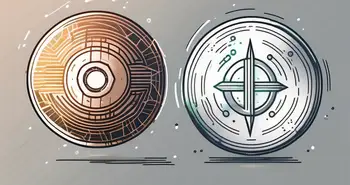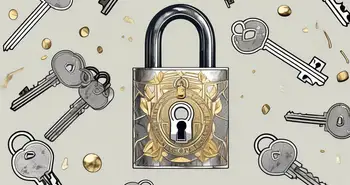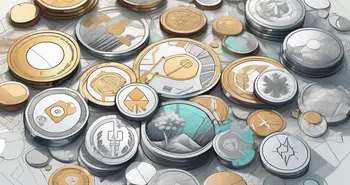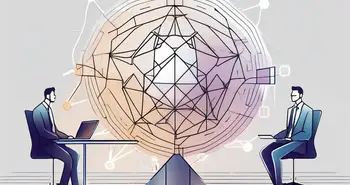The Significance of Ordinals in BRC-20 Tokens
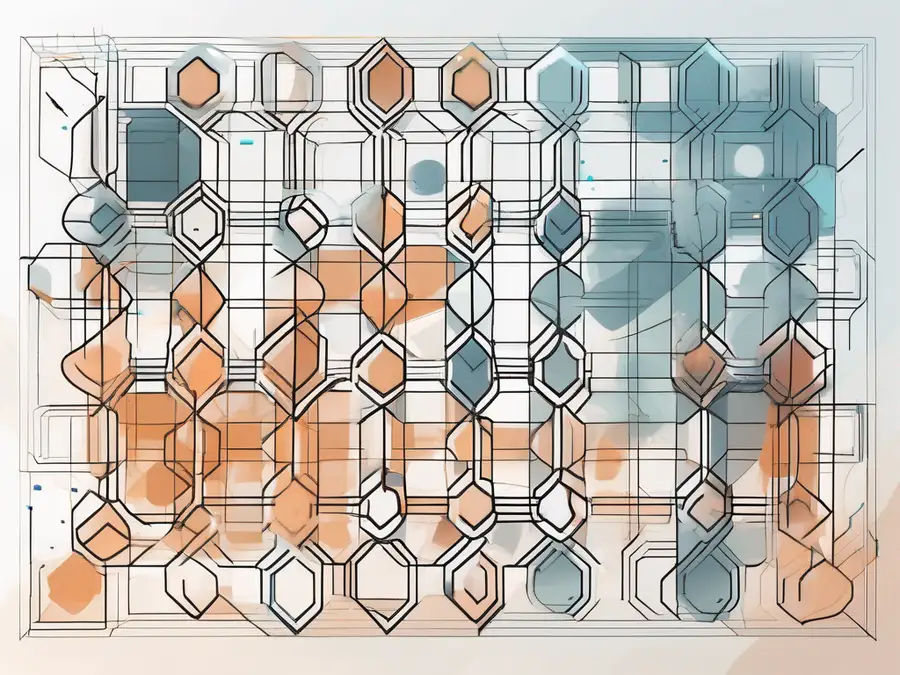
As an expert in the field of blockchain and cryptocurrency, I am always excited to explore the intricacies of various token standards. Today, I want to delve into the fascinating world of BRC-20 tokens and shed light on the significance of ordinals within this framework.
Understanding BRC-20 Tokens
Before we dive into the realm of ordinals, let's first gain a solid understanding of BRC-20 tokens. BRC-20, also known as the Blockchain-based Non-Fungible Token Standard, is a token standard on the blockchain that enables the creation and management of non-fungible tokens (NFTs).
Unlike their fungible counterparts, NFTs are unique and indivisible digital assets. They have revolutionized the world of digital collectibles, art, and even real estate. BRC-20 tokens are the backbone of this revolutionary ecosystem, providing a standardized framework for NFT operations.
The Basics of BRC-20 Tokens
At their core, BRC-20 tokens are built on the Ethereum blockchain, leveraging its smart contract capabilities. Ethereum's powerful infrastructure allows developers to create and deploy BRC-20 tokens easily. This standardization ensures compatibility and interoperability among different platforms and applications.
One key aspect of BRC-20 tokens is their ability to represent ownership and validate transactions. These tokens use unique identifiers known as ordinals, which play a crucial role in token functionality and security.
Key Features of BRC-20 Tokens
BRC-20 tokens offer a range of features that make them highly versatile and adaptable to different use cases. Firstly, they allow for the creation of tokenized assets that can represent valuable digital or physical items.
Secondly, BRC-20 tokens incorporate built-in functionalities such as the ability to transfer ownership, track token history, and implement complex business logic through smart contracts. These features ensure transparency and trust within the token ecosystem.
Furthermore, BRC-20 tokens can facilitate events known as token swaps, enabling seamless exchange of tokens between users. This opens up a world of possibilities for decentralized exchanges, marketplaces, and even peer-to-peer transactions.
Moreover, BRC-20 tokens have gained significant traction in the gaming industry. They have become a fundamental component of blockchain-based games, allowing players to own and trade in-game assets securely. This has created a new paradigm where players have true ownership and control over their virtual possessions.
Additionally, BRC-20 tokens have sparked a wave of innovation in the art world. Artists can now tokenize their creations, turning them into unique digital assets that can be bought, sold, and traded on various platforms. This has democratized the art market, giving artists more control over their work and providing collectors with new opportunities to engage with art.
In conclusion, BRC-20 tokens have revolutionized the way we perceive and interact with digital assets. Their standardization and versatility have paved the way for new possibilities in various industries, from gaming to art. As the blockchain ecosystem continues to evolve, BRC-20 tokens will undoubtedly play a crucial role in shaping the future of digital ownership and exchange.
The Role of Ordinals in BRC-20 Tokens
Now that we have a grasp of BRC-20 tokens, let's zoom in on the role of ordinals in this token standard. Ordinals serve as unique identifiers for BRC-20 tokens, adding an extra layer of security and functionality to the token ecosystem.
Defining Ordinals in the Context of BRC-20 Tokens
Ordinals, in the context of BRC-20 tokens, are sequential numbers assigned to each token within a given series. These numbers can be used to differentiate and classify tokens based on their ordinal values.
For example, a series of digital collectibles may have ordinals ranging from 1 to 10,000, with each ordinal representing a distinct token within that series.
Expanding on the concept of ordinals, it's important to note that they not only provide a unique numerical label to tokens but also contribute to establishing a hierarchy within token series. This hierarchical structure can be leveraged for various purposes, such as organizing tokens based on rarity or assigning different privileges to tokens with specific ordinal ranges.
The Function of Ordinals in Token Transactions
The use of ordinals in BRC-20 tokens has several noteworthy benefits. Firstly, they provide a unique identifier for each token, ensuring that no two tokens in a series are the same. This uniqueness enhances the traceability and authenticity of token transactions.
Moreover, ordinals play a crucial role in preventing token double spending. By assigning and tracking the ordinal values of tokens during transactions, it becomes virtually impossible to duplicate or manipulate tokens, bolstering overall token security.
Furthermore, the incorporation of ordinals in token transactions facilitates efficient auditing and monitoring processes. By referencing ordinals, token issuers and holders can easily verify the authenticity of tokens being transferred, streamlining compliance procedures and reducing the risk of fraudulent activities within the token ecosystem.
The Impact of Ordinals on Token Security
Token security is a paramount concern in the blockchain realm, and ordinals can significantly enhance the protection of BRC-20 tokens from unauthorized access and fraudulent activities.
Implementing ordinals in token security protocols adds an extra layer of defense against potential threats in the blockchain ecosystem. By incorporating unique ordinal values for each token, the system can establish a more secure and transparent framework for token management and authentication.
Ordinals and Token Authentication
With the help of ordinals, token authentication becomes more robust. Each token's unique ordinal is stored on the blockchain, providing a tamper-proof record of its existence and ownership history.
Furthermore, the utilization of ordinals enables seamless verification of token ownership and provenance. By cross-referencing the ordinal values with the blockchain ledger, stakeholders can validate the legitimacy of token transfers and ownership changes with precision and accuracy.
A smart contract can verify the ordinal of a token during a transaction, ensuring that only valid and authorized tokens are transferred. This eliminates the risk of counterfeit tokens and enhances trust within the token ecosystem.
Ordinals in Preventing Double Spending
Double spending is a notorious issue in digital transactions, where the same token is spent more than once. Ordinals act as a powerful deterrent against double spending in BRC-20 tokens.
By assigning, tracking, and validating the ordinal values of tokens, the system can instantly detect and reject any attempts to spend the same token twice. This prevents fraudulent activities and ensures the integrity of token transactions.
Moreover, the integration of ordinals in the token verification process bolsters the overall security posture of the blockchain network. By enforcing strict ordinal validation mechanisms, the system can mitigate the risks associated with unauthorized token transfers and enhance the overall resilience of the token ecosystem against malicious actors.
The Influence of Ordinals on Token Interoperability
Beyond security, ordinals also play a crucial role in enabling seamless token interoperability, which is essential for the continuous growth and development of the token ecosystem.
Ordinals and Cross-Chain Transactions
Interoperability between different blockchain networks is a challenge that ordinals can help overcome. By using ordinals as common identifiers, tokens can be recognized and transferred across different chains, unlocking the potential for cross-chain transactions.
This interoperability facilitates the integration of BRC-20 tokens with other token standards, enhancing liquidity and expanding the scope of token usage. It opens doors to new and exciting opportunities for decentralized finance, gaming, and much more.
The Role of Ordinals in Token Swaps
Token swaps, where users exchange one token for another, are a cornerstone of decentralized exchanges and liquidity pools. Ordinals streamline and simplify the process of token swaps, making them faster and more efficient.
By utilizing ordinals, the system can quickly validate the availability and authenticity of tokens involved in a swap, ensuring a smooth and secure exchange experience for users.
Future Developments and Challenges
The world of BRC-20 tokens is constantly evolving, and there are exciting developments and challenges on the horizon.
Potential Improvements in Ordinal Implementation
As the technology matures, there is room for improvement in the implementation of ordinals. More advanced cryptographic algorithms can be explored to enhance the security of ordinals, minimizing the risk of potential attacks.
Additionally, innovations in token standards and blockchain protocols may introduce enhanced ordinal functionalities, further augmenting the capabilities of BRC-20 tokens.
Addressing Challenges in Ordinal Usage
While ordinals bring significant advantages to BRC-20 tokens, it's essential to address challenges associated with their usage. Scalability and performance optimizations are areas that warrant continued research and development to ensure the seamless functioning of the token ecosystem.
Moreover, educating users about the importance of ordinals and safe token practices is crucial in avoiding potential pitfalls and promoting a secure token environment.
FAQ
What are BRC-20 tokens?
BRC-20 tokens are a token standard used for creating and managing non-fungible tokens on the Ethereum blockchain. They offer features such as ownership representation, transaction validation, and compatibility across different platforms.
What are ordinals in BRC-20 tokens?
Ordinals are unique sequential numbers assigned to each token within a series of BRC-20 tokens. They serve as identifiers that enhance token security, prevent double spending, and enable interoperability.
How do ordinals improve token security?
Ordinals improve token security by providing unique identifiers for tokens and adding an extra layer of authentication. They also prevent double spending, ensuring that tokens can only be spent once.
How do ordinals facilitate token interoperability?
Ordinals facilitate token interoperability by serving as common identifiers across different blockchain networks. They enable tokens to be recognized and transferred across chains, enabling cross-chain transactions and expanding token liquidity.
What are the future developments and challenges for ordinals in BRC-20 tokens?
Future developments may include improvements in ordinal implementation, such as enhanced cryptographic algorithms and new functionalities. Challenges include scalability and performance optimizations, as well as ensuring user education on safe token practices.
As an expert in the field, I highly recommend diving deeper into the world of BRC-20 tokens and exploring the exciting possibilities they offer. Embrace the power of ordinals and witness firsthand the revolution they bring to the token ecosystem.
As you explore the transformative potential of BRC-20 tokens and the power of ordinals, consider taking your trading experience to the next level with Morpher. Embrace a platform that's reshaping the investment landscape by offering zero fees, infinite liquidity, and a unique trading experience built on the Ethereum blockchain. Whether you're interested in stocks, cryptocurrencies, or the burgeoning world of NFTs, Morpher provides the tools you need for a revolutionary trading journey. Sign Up and Get Your Free Sign Up Bonus today, and join the community of traders who are already leveraging Morpher's innovative approach to democratize trading across the globe.

Disclaimer: All investments involve risk, and the past performance of a security, industry, sector, market, financial product, trading strategy, or individual’s trading does not guarantee future results or returns. Investors are fully responsible for any investment decisions they make. Such decisions should be based solely on an evaluation of their financial circumstances, investment objectives, risk tolerance, and liquidity needs. This post does not constitute investment advice.

Painless trading for everyone
Hundreds of markets all in one place - Apple, Bitcoin, Gold, Watches, NFTs, Sneakers and so much more.

Painless trading for everyone
Hundreds of markets all in one place - Apple, Bitcoin, Gold, Watches, NFTs, Sneakers and so much more.


